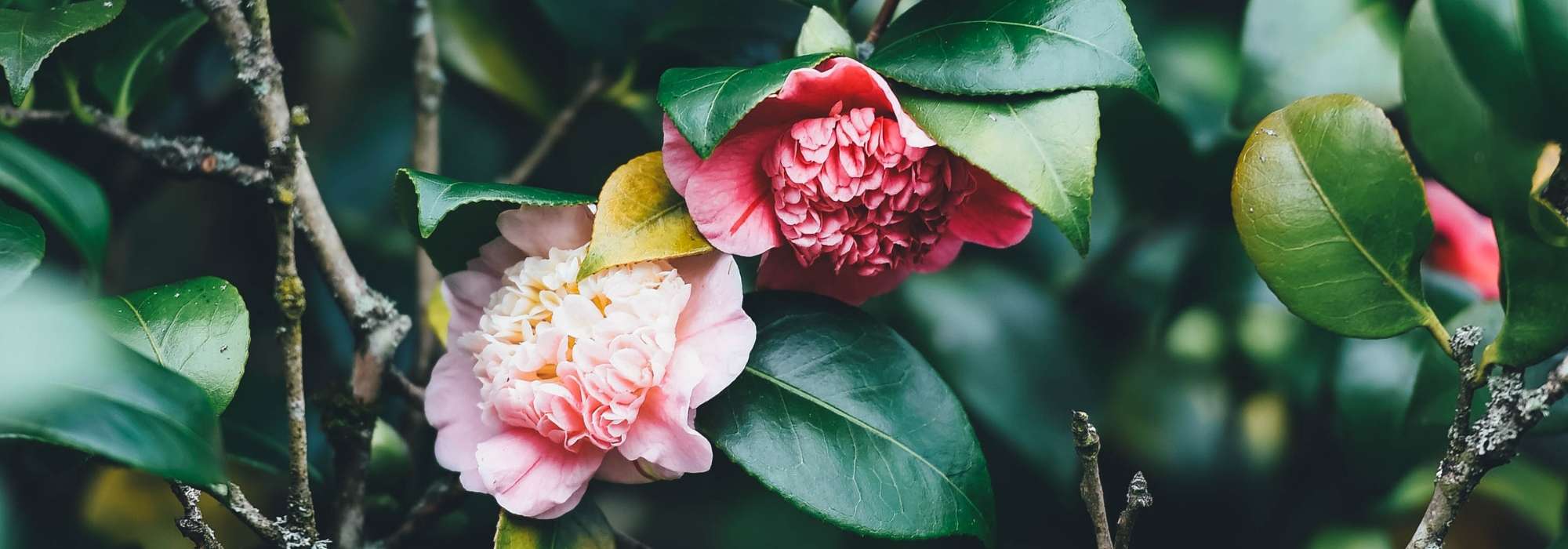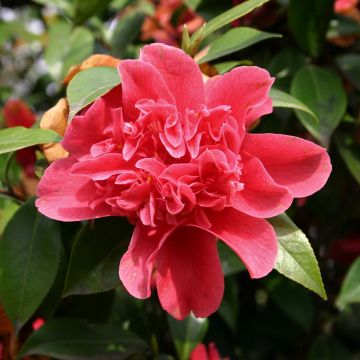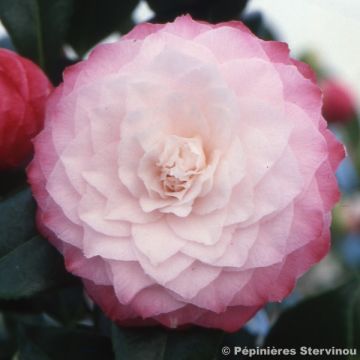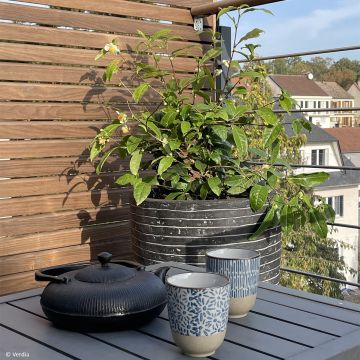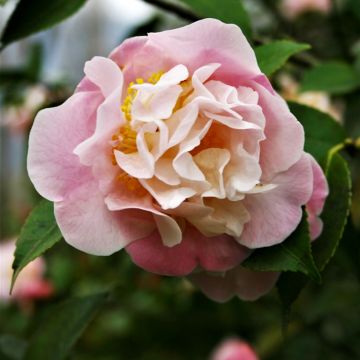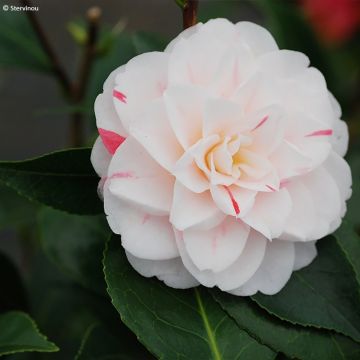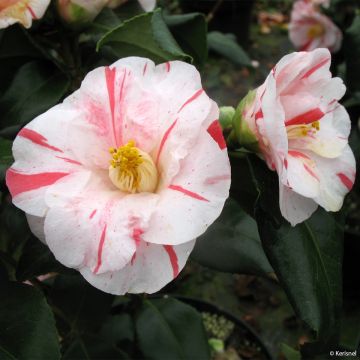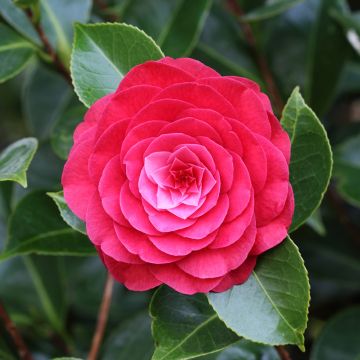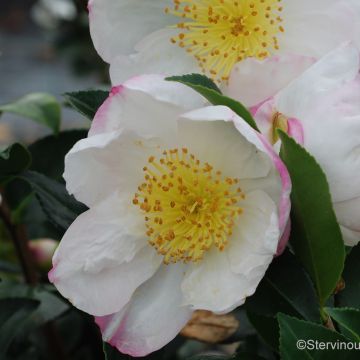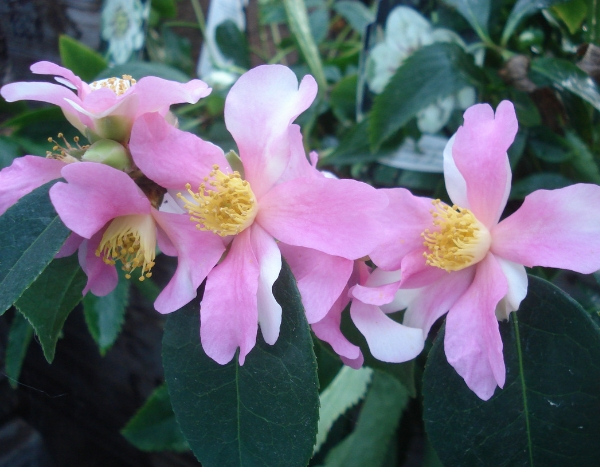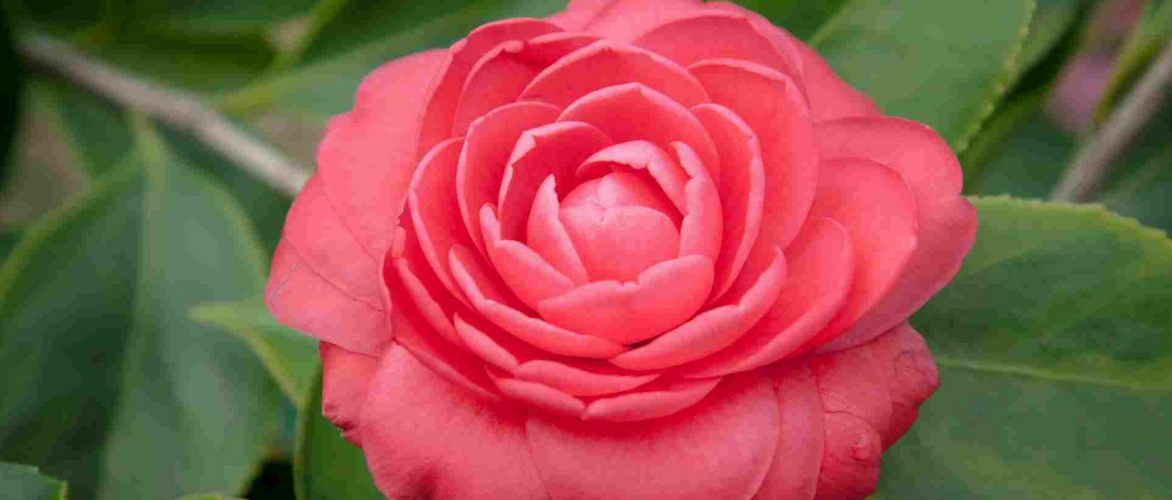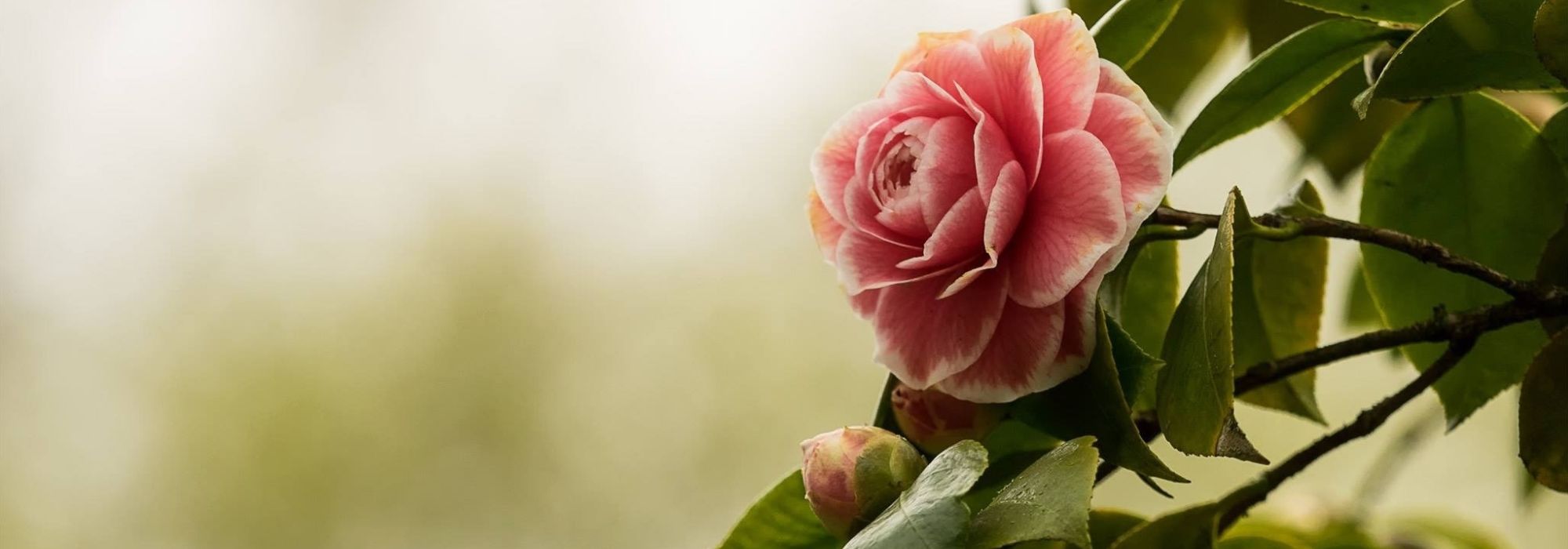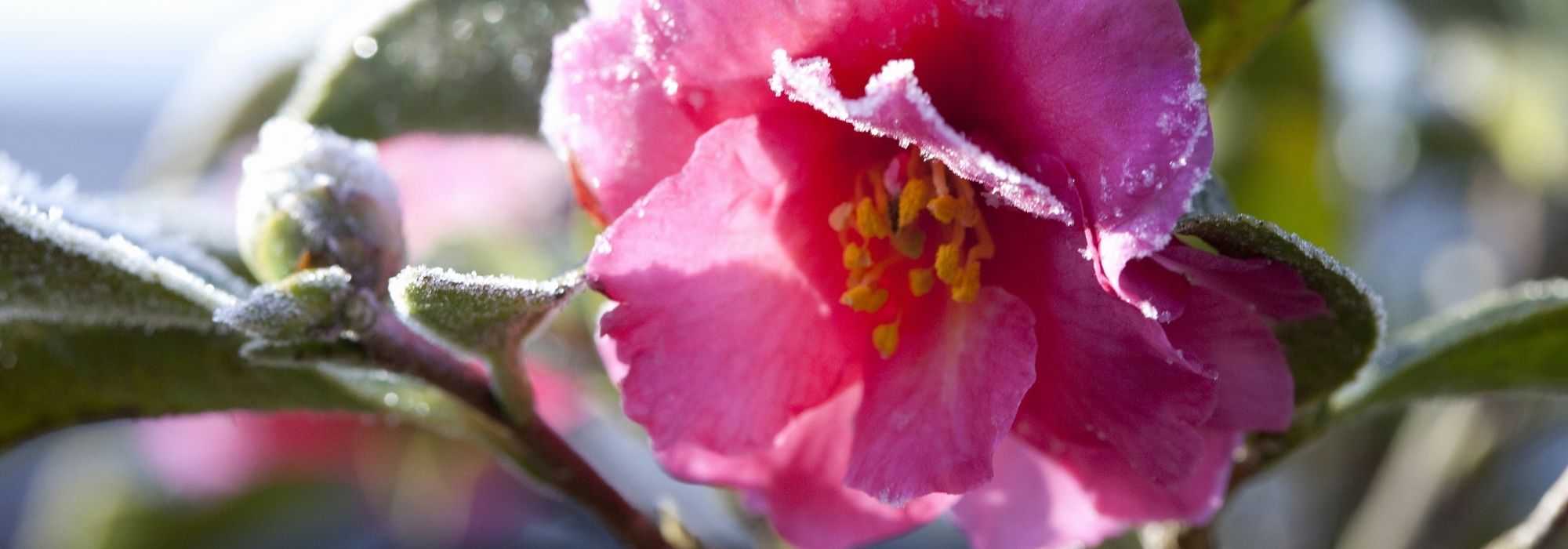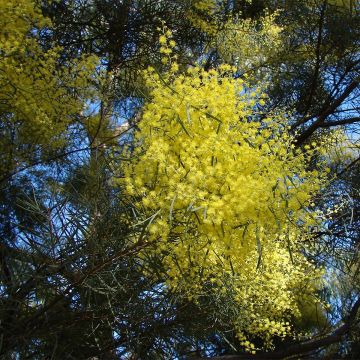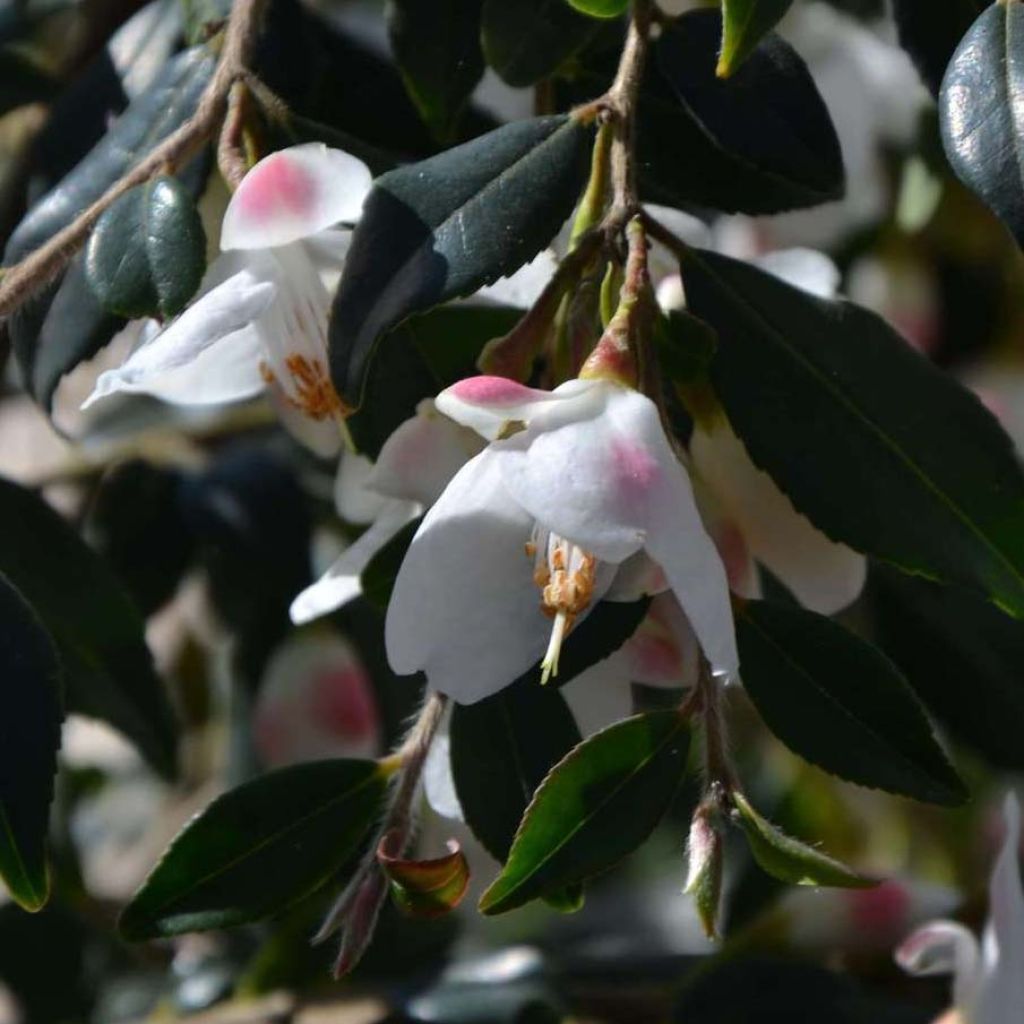

Camellia rosthoriana Cupido
Camellia rosthoriana Cupido
Camellia rosthoriana Cupido
As explained in my previous message, the young camellia received had been taken out of the ground to be placed in its pot, was replanted in the spring, and .... has died a natural death!
Fabienne, 22/08/2022
Special offer!
Receive a €20 voucher for any order over €90 (excluding delivery costs, credit notes, and plastic-free options)!
1- Add your favorite plants to your cart.
2- Once you have reached €90, confirm your order (you can even choose the delivery date!).
3- As soon as your order is shipped, you will receive an email containing your voucher code, valid for 3 months (90 days).
Your voucher is unique and can only be used once, for any order with a minimum value of €20, excluding delivery costs.
Can be combined with other current offers, non-divisible and non-refundable.
Home or relay delivery (depending on size and destination)
Schedule delivery date,
and select date in basket
This plant carries a 24 months recovery warranty
More information
We guarantee the quality of our plants for a full growing cycle, and will replace at our expense any plant that fails to recover under normal climatic and planting conditions.
Would this plant suit my garden?
Set up your Plantfit profile →
Description
With its upright and compact habit and delicate branches, 'Cupido' Camellia is a highly elegant bush. Adorned with young shoots coloured red and deep pink flower buds that open into delicate white flowers tinged with pink-red from the end of winter onwards. With its beautiful dark green evergreen foliage, this bush is decorative all year round. Its modest growth is well-suited for small gardens or container cultivation on the terrace. These qualities earned it the Bronze Medal award at Plantarium in 2012 in the Netherlands.
This horticultural variety is derived from the Camellia rosthorniana, an evergreen botanical species originating from China (Guizhou, Guangxi, Sichuan and Yunnan provinces). This variety was discovered in 1991 in a Japanese nursery. Like all camellias, it belongs to the family Theaceae. 'Cupido' has a distinctly upright habit, taller than it is wide, and slightly loose growth with flexible, upright branches at a 45-degree angle. Its growth is moderate: at the age of 10, it will reach approximately 1.50m (5 ft) in height and 80cm (31.5 in) in width. At full maturity, it can reach about 3m (10 ft) in height and 2m (6 ft 7 in) in width. It blooms from February to March in mild climates, with the peak of flowering ocurring in April and May. This variety produces buds of a vivid pink-red colour. They open into single flowers with 5-7 petals which are quite large for the species, measuring about 2.5 to 3cm (1 to 1.2 in) in diameter. The undersides of the outer petals are dotted with pink-red along the edges against a white background. Its young leaves are tinged with reddish-violet, then mature to a dark green colour. They are simple, entire, and elliptical in shape. Smaller than those of the botanical species, they measure about 2.5 to 4.5cm (1 to 2 in) in length and 1 to 2cm (0.4 to 0.8 in) in width, and are slightly shiny on the upper side. Hardy down to -12°C, this variety prefers partial shade and protection from cold winds. It thrives in acidic, humus-rich, moist, and light soils.
Plant 'Cupido' Camellia in a beautiful pot on your terrace, or in an ericaceous bed alongside dwarf rhododendrons, azaleas, Skimmia, Japanese quince and heathers. Plant it in autumn with some spring bulbs: tulips and narcissus for a magnificent and colourful display. Place it on a partially shaded terrace, along a path, or next to a wall exposed to the evening or morning sun (not full), protected from cold and drying winds.
The name Camellia was attributed to the plant in 1735 by the Swedish naturalist Carl Von Linnaeus, in honour of Georg Josef Kamel (latinised as "Camellus"), an apothecary in the service of the Jesuits in the Philippines at the end of the 17th century. It was not until 1792 that the Camellia arrived in Europe.
Camellia rosthoriana Cupido in pictures
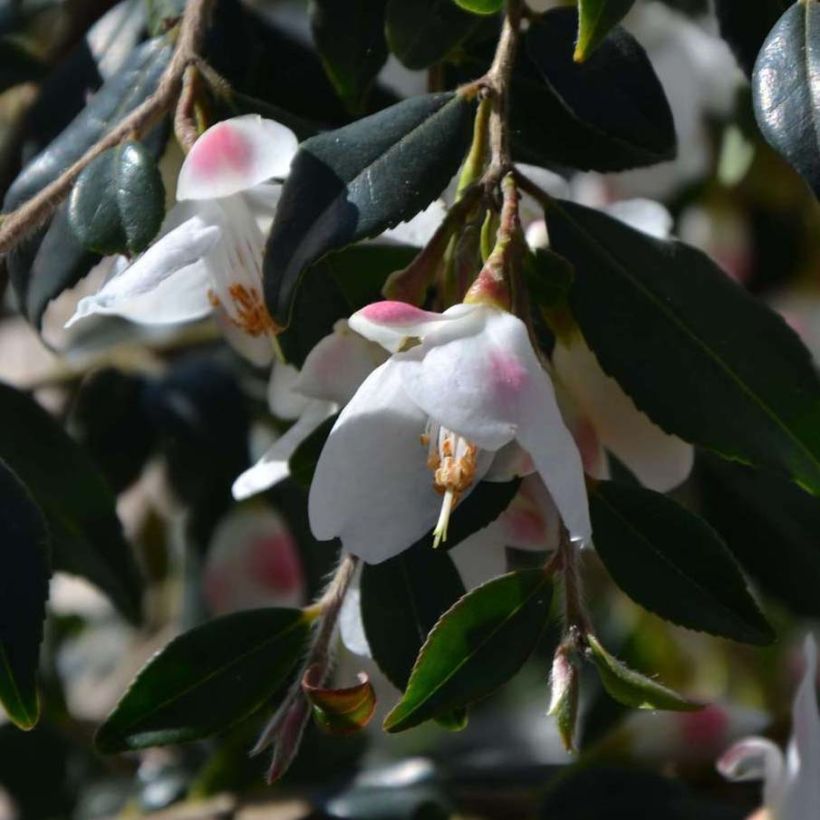

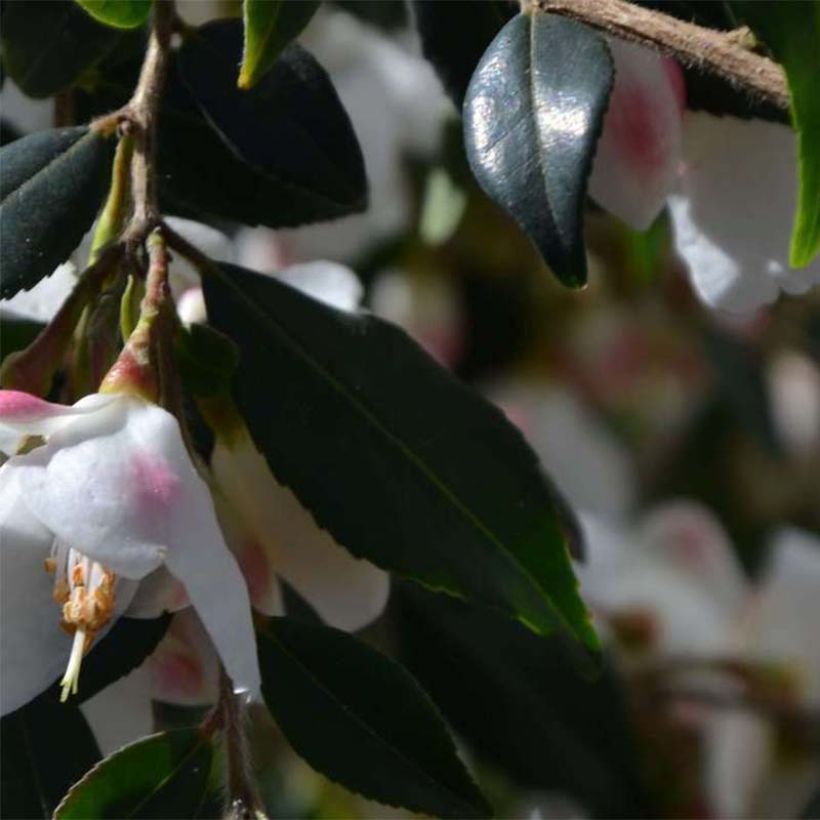

Plant habit
Flowering
Foliage
Botanical data
Camellia
rosthoriana
Cupido
Theaceae
Cultivar or hybrid
Other Camellias A to Z
View all →Planting and care
Camellia 'Cupido' should be placed in a partially shaded area (avoid afternoon sun) sheltered from cold and drying winds. The roots should remain moist throughout the year. Plant it in a humus-rich, acidic to neutral, fertile, light and well-drained soil. Do not plant the bush too deeply; the top of the root ball should be covered with 3 cm (1.2 in) of soil. In winter, cover it with a 5 to 7 cm (2 to 2.8 in) thick mulch composed of leaf compost and shredded bark. Beware of late frosts that can damage the flowers and buds. During dry periods, water the bush to prevent the dropping of flower buds. A well-established plant is hardy to -12°C (10.4 °F). Protect younger camellias with a winter fleece in case of severe frost but remember to ventilate the bush during the day, as soon as temperatures rise.
Planting period
Intended location
Care
Planting & care advice
-
, onOrder confirmed
Reply from on Promesse de fleurs
Similar products
Haven't found what you were looking for?
Hardiness is the lowest winter temperature a plant can endure without suffering serious damage or even dying. However, hardiness is affected by location (a sheltered area, such as a patio), protection (winter cover) and soil type (hardiness is improved by well-drained soil).

Photo Sharing Terms & Conditions
In order to encourage gardeners to interact and share their experiences, Promesse de fleurs offers various media enabling content to be uploaded onto its Site - in particular via the ‘Photo sharing’ module.
The User agrees to refrain from:
- Posting any content that is illegal, prejudicial, insulting, racist, inciteful to hatred, revisionist, contrary to public decency, that infringes on privacy or on the privacy rights of third parties, in particular the publicity rights of persons and goods, intellectual property rights, or the right to privacy.
- Submitting content on behalf of a third party;
- Impersonate the identity of a third party and/or publish any personal information about a third party;
In general, the User undertakes to refrain from any unethical behaviour.
All Content (in particular text, comments, files, images, photos, videos, creative works, etc.), which may be subject to property or intellectual property rights, image or other private rights, shall remain the property of the User, subject to the limited rights granted by the terms of the licence granted by Promesse de fleurs as stated below. Users are at liberty to publish or not to publish such Content on the Site, notably via the ‘Photo Sharing’ facility, and accept that this Content shall be made public and freely accessible, notably on the Internet.
Users further acknowledge, undertake to have ,and guarantee that they hold all necessary rights and permissions to publish such material on the Site, in particular with regard to the legislation in force pertaining to any privacy, property, intellectual property, image, or contractual rights, or rights of any other nature. By publishing such Content on the Site, Users acknowledge accepting full liability as publishers of the Content within the meaning of the law, and grant Promesse de fleurs, free of charge, an inclusive, worldwide licence for the said Content for the entire duration of its publication, including all reproduction, representation, up/downloading, displaying, performing, transmission, and storage rights.
Users also grant permission for their name to be linked to the Content and accept that this link may not always be made available.
By engaging in posting material, Users consent to their Content becoming automatically accessible on the Internet, in particular on other sites and/or blogs and/or web pages of the Promesse de fleurs site, including in particular social pages and the Promesse de fleurs catalogue.
Users may secure the removal of entrusted content free of charge by issuing a simple request via our contact form.
The flowering period indicated on our website applies to countries and regions located in USDA zone 8 (France, the United Kingdom, Ireland, the Netherlands, etc.)
It will vary according to where you live:
- In zones 9 to 10 (Italy, Spain, Greece, etc.), flowering will occur about 2 to 4 weeks earlier.
- In zones 6 to 7 (Germany, Poland, Slovenia, and lower mountainous regions), flowering will be delayed by 2 to 3 weeks.
- In zone 5 (Central Europe, Scandinavia), blooming will be delayed by 3 to 5 weeks.
In temperate climates, pruning of spring-flowering shrubs (forsythia, spireas, etc.) should be done just after flowering.
Pruning of summer-flowering shrubs (Indian Lilac, Perovskia, etc.) can be done in winter or spring.
In cold regions as well as with frost-sensitive plants, avoid pruning too early when severe frosts may still occur.
The planting period indicated on our website applies to countries and regions located in USDA zone 8 (France, United Kingdom, Ireland, Netherlands).
It will vary according to where you live:
- In Mediterranean zones (Marseille, Madrid, Milan, etc.), autumn and winter are the best planting periods.
- In continental zones (Strasbourg, Munich, Vienna, etc.), delay planting by 2 to 3 weeks in spring and bring it forward by 2 to 4 weeks in autumn.
- In mountainous regions (the Alps, Pyrenees, Carpathians, etc.), it is best to plant in late spring (May-June) or late summer (August-September).
The harvesting period indicated on our website applies to countries and regions in USDA zone 8 (France, England, Ireland, the Netherlands).
In colder areas (Scandinavia, Poland, Austria...) fruit and vegetable harvests are likely to be delayed by 3-4 weeks.
In warmer areas (Italy, Spain, Greece, etc.), harvesting will probably take place earlier, depending on weather conditions.
The sowing periods indicated on our website apply to countries and regions within USDA Zone 8 (France, UK, Ireland, Netherlands).
In colder areas (Scandinavia, Poland, Austria...), delay any outdoor sowing by 3-4 weeks, or sow under glass.
In warmer climes (Italy, Spain, Greece, etc.), bring outdoor sowing forward by a few weeks.






























